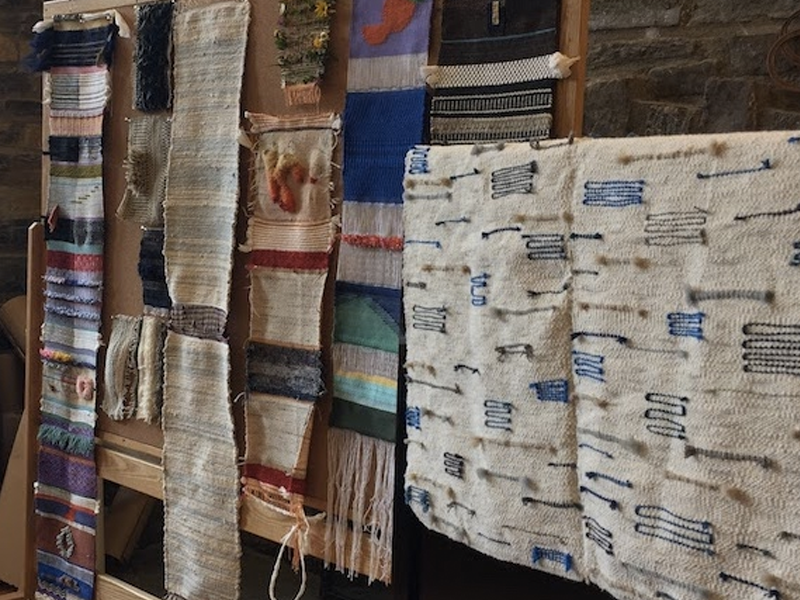We’re back with an update from our in-house Design Lead, Janie Woodbridge, from Penland School of Crafts. Janie has been hard at work teaching her Penland students how to weave beautiful, durable rugs on floor looms. Read on to learn more about her class!
Janie, can you share some rug weaving basics?
The most important thing about rug weaving is material choice. Rugs are utilitarian objects – they are stepped on, muddied, beaten, and pretty brutally treated all around. Picking strong materials is the first step to a successful hand woven rug.
The next most important thing is your loom set up. We’re weaving on floor looms, which are much larger than a lap or table loom. This allows for heavier beating of the weft or fill yarns, which is critical for creating a densely woven rug. Beating is the action of compressing the weft yarns, resulting in a strong, sturdy woven piece.
Additionally, when you prepare a warp – the vertical threads that form the structure of the woven piece – you should use a less dense ends-per-inch count, meaning fewer yarns per inch. This also makes the final piece strong & sturdy.

This student has applied rug techniques to non-durable materials like flowers and grasses
What rug-specific techniques are you teaching?
I am teaching some really fun fringe weaving techniques. These make it possible to weave a pile, or the soft, raised surface that so many rugs feature. These techniques are also used in wall hangings to create interest and texture. One of my favorite fringe techniques is called a Rya Knot. If you want to learn how to create Rya Knots, check out this great tutorial from Karen at Warped for Good!
I am also going to talk about some other knot varieties – the Turkish Ghiordes rug knot, the Persian Senna Knot, and how to use a dowel rod to create rug knots.
What about rag rugs?
I will be teaching some rag rug techniques! The weaving is pretty much the same as anything else, but the materials are what make a rag rug special. Rag rugs are created from pieces of fabric cut into strips. This fabric can be sewing scraps, t-shirts, old jeans – anything, really. I taught the WeaveUp team how to cut fabric strips for our DIY garland here. The same technique can be used to create rag rugs.

Scrap fabrics being woven into a rag rug
Janie, thanks for sharing with us! We can’t wait to hear more about your time at Penland.
You can follow Penland on Instagram here to see stellar work from students and residents all year long. You can also check out Penland on Facebook, Twitter, YouTube, and Pinterest.
We also highly recommend reading through some of Penland’s stories, featuring individuals and artists who have made Penland special over the years.



Leave A Comment